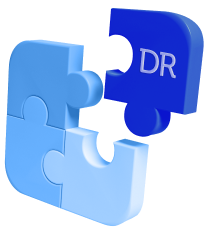Unified Systems at Atrius for Collaboration Success
The importance of a unified system cannot be overstated. As we had the opportunity to discuss with Atrius’ Director of Revenue Operations, Hannah Hanrahan, in our recent podcast episode, the need for a unified system is paramount in overcoming organizational silos and maximizing operational efficiency. In this blog post, we will delve into the insights inspired by our conversation with Hannah, highlighting the challenges of managing data across multiple systems and the potential benefits of investing in a seamless and user-friendly unified system.
Edwin Ryan Poquiz
Reading time: 9 minutes
Introduction
In modern businesses where data is generated and utilized at an unprecedented rate, a unified system plays a vital role in providing a holistic view of the organization’s operations. It allows for seamless integration of different systems and processes, facilitating smooth data flow between departments and enhancing overall productivity.
During our conversation with Hannah Hanrahan from Atrius Enterprise Solutions in our Data for Subscriptions podcast, she described the importance of a shared products and account view across different systems that can solve the challenges of silos within the larger organization.
Atrius is a division within the Intelligent Spaces Group, which is a part of Acuity Brands. As a part of the larger organization, Atrius specializes in offering solutions for ESG reporting, energy management, indoor wayfinding, and real-time asset tracking. The Intelligent Spaces Group focuses on transforming spaces to be intelligent, intuitive, and efficient.
Managing data across multiple systems can be challenging for companies. One of the main challenges is the lack of consistency and uniformity in data. Different systems often operate with their own set of rules and structures, resulting in data discrepancies and duplication. This hinders the ability to make informed decisions and can lead to inefficiencies in operations.
Additionally, integrating different systems requires significant manual effort, leading to increased labor and resource costs. To overcome these challenges, companies need to invest in a unified system that can effectively orchestrate and manage data flow across all systems. This system, as mentioned by Hannah, should provide a seamless user interface and reduce manual efforts. By achieving a unified system, companies like Atrius can optimize their operations, improve decision-making, and enhance overall efficiency.
The Benefits of Unified Systems
Implementing a unified system offers several advantages for businesses. Here are some of the key benefits:
Improved Data Accessibility
A unified system provides a centralized repository for data, making it easily accessible to all authorized users. This eliminates the need to search through various systems or departments for information, saving time and effort.
Enhanced Data Accuracy
With a unified system, data can be entered, updated, and synchronized in real-time across all integrated systems. This minimizes the risk of data discrepancies and duplicate entries, ensuring data accuracy and consistency throughout the organization.
Increased Operational Efficiency
By integrating different systems into a unified platform, organizations can streamline workflows and automate processes. This reduces manual effort and eliminates the need for redundant tasks, leading to improved efficiency and productivity.
Seamless Integration with Existing Systems
A unified system allows for easier integration with existing systems already in place within the organization. Instead of replacing or dismantling legacy systems, the unified system acts as a bridge, connecting and harmonizing data between different systems. This ensures a smooth transition without disrupting existing operations.
Reduced Manual Data Transfers
Manual data transfers between systems can be time-consuming, error-prone, and resource-intensive. A unified system eliminates or minimizes the need for such manual data transfers by automating data synchronization and integration. This reduces the chances of human error and frees up resources for more valuable tasks.
Improved Decision-Making
With a unified system, decision-makers have access to accurate and up-to-date information from across the organization. This comprehensive view allows for more informed and data-driven decision-making, leading to better outcomes and strategic planning.
Ultimately, a unified system provides a cohesive and streamlined approach to data management, eliminating silos, improving data accessibility, accuracy, and efficiency, and enabling seamless integration with existing systems. These advantages empower businesses to optimize their operations, enhance customer experiences, and drive growth.
The Essential Elements of a Unified System
In the podcast episode, Hannah Hanrahan discusses her vision of a robust unified system that can streamline operations and facilitate seamless data integration. While specific elements may not be explicitly mentioned in conversation, we can explore the essential ones that typically contribute to a robust unified system. These elements include:
Data Connectors
Data connectors play a crucial role in integrating various systems and enabling smooth data flow between them. These connectors act as bridges between different applications, allowing them to exchange data in a standardized format. For example, connectors can facilitate data transfer between CRM systems, billing platforms, and other enterprise software.
Automation
Automation tools are essential for streamlining processes and reducing manual effort. By automating tasks like data synchronization, data cleansing, and data validation, organizations can minimize errors and improve operational efficiency. Automation tools can also help ensure that data is consistently updated and synchronized across all integrated systems.
Data Mapping Capabilities
Data mapping refers to the process of matching and transforming data fields between different systems. A robust unified system should have the capability to map data fields from source systems to the target system, ensuring that data is accurately interpreted and transferred. This mapping process ensures that data remains consistent and aligned across all connected systems.
Centralized Data Repository
The ability to centralize data in a unified system is crucial for providing a single source of truth. A robust unified system should have a central repository where all relevant data is stored, accessible, and authoritative. This centralized approach ensures data consistency and eliminates the need for data duplication or manual consolidation.
Data Governance and Security
A solid unified system includes robust data governance mechanisms and security protocols. This involves implementing data access controls, encryption, and other security measures to protect sensitive information. Proper governance ensures data quality, compliance, and privacy in line with industry regulations and organizational policies.
Scalability and Flexibility
A robust unified system should be capable of accommodating growth and evolving business needs. It should be flexible enough to adapt to changes in the organization’s structure, processes, and systems. Scalability allows the system to handle large volumes of data and increased complexity as the business expands or diversifies.
Ultimately, a unified system provides a cohesive and streamlined approach to data management, eliminating silos, improving data accessibility, accuracy, and efficiency, and enabling seamless integration with existing systems. These advantages empower businesses to optimize their operations, enhance customer experiences, and drive growth.
On Adaptability and Scalability
Hannah emphasized the importance of choosing a unified system that can adapt and scale as a business grows. This adaptability is crucial because businesses evolve over time, and their systems and technologies need to keep pace with these changes. Here are some key points highlighting the significance of a flexible and scalable unified system:
Future-Proofing
A unified system that can adapt and scale ensures long-term sustainability and future-proofing. As a business expands, introduces new products, services, pricing structures, or enters new markets, the unified system needs to accommodate these changes seamlessly without disrupting operations. The ability to scale the system without significant investments in re-architecture or downtime is essential for business continuity.
Integration of New Systems
Integrating new systems and technologies into the unified system is a common need for growing businesses. Whether it’s integrating with a new CRM platform, billing system, or customer support tool, flexibility is essential. A robust unified system should have the capability to easily integrate with these systems, supporting the flow of data and enabling efficient collaboration between various departments within an organization.
Agility in Business Processes
Flexibility in the unified system allows for agile improvement and optimization of business processes. As new technologies, tools, or methodologies emerge, businesses should have the freedom to adopt them and integrate them into their workflow. A flexible system enables businesses to leverage the latest innovations and stay ahead of the competition by continuously improving their operations and customer experience.
Scalability and Performance
As a business grows, the unified system should be able to handle increasing volumes of data, transactions, and user interactions. It should have the capacity to scale resources dynamically to support peak loads and ensure optimal performance. This scalability allows businesses to expand their operations, serve a larger customer base, and handle growing data requirements without sacrificing efficiency or user experience.
Vendor and Technology Independence
A flexible unified system is not overly dependent on specific vendors or proprietary technologies. It allows businesses to innovate and choose the best-fit solutions for their evolving needs, selecting different technology providers as required. This independence gives businesses greater control and reduces the risk of vendor lock-in, enabling them to adapt quickly to changes in the market and take advantage of emerging technology trends.
Best Practices for Implementing a Unified System
Implementing a unified system within an organization requires careful planning and consideration. In the podcast episode, Hannah discussed the challenges and benefits of adopting a unified system and highlights key aspects that organizations should focus on for a successful implementation. Based on our conversation with Hannah, this article presents practical recommendations and best practices to guide organizations in adopting a unified system effectively.
Excerpt from the Data for Subsciptions podcast episode
“Harmonizing Systems for Success: Navigating Complexity in SaaS, Pricing, and Data Management at Atrius”
Thorough Planning
Before implementing a unified system, invest time and effort in thorough planning. Define clear objectives, identify key requirements, and create a roadmap outlining the implementation process. Consider factors such as data migration, integration challenges, and change management. A well-defined plan sets the foundation for a successful implementation.
Involve Key Stakeholders
Engage key stakeholders from different departments and levels within the organization early in the process. This includes representatives from IT, operations, finance, customer service, and other relevant areas. Involving stakeholders allows for their input, buy-in, and active participation throughout the planning, implementation, and adoption stages.
Conduct a System Audit
Before integrating various systems into a unified system, conduct a thorough audit of existing systems and data. Identify redundancies, inconsistencies, and opportunities for optimization. A system audit provides insights into the current state and helps determine the requirements for data integration and cleanup.
Data Cleansing and Standardization
Ensure that data is clean, accurate, and standardized before integrating it into the unified system. Identify and resolve any data quality issues, duplicates, or outdated records. This step ensures that the unified system starts with reliable and consistent data, enhancing the effectiveness of the system for decision-making and reporting.
Change Management and Training
Implementing a unified system often requires changes in processes and workflows. Develop a robust change management strategy to address resistance to change and ensure smooth adoption. Provide comprehensive training to users on the new system, its benefits, and how to effectively utilize its features. Ongoing support and guidance during the transition period are essential for successful adoption.
Regular Monitoring and Optimization
Once the unified system is implemented, establish processes for regular monitoring, maintenance, and optimization. Define key performance indicators (KPIs) to track the system’s effectiveness, data accuracy, and user satisfaction. Continuously evaluate and refine the system to ensure it aligns with evolving business needs and technology advancements.
Data Security and Governance
Prioritize data security and establish robust governance processes. Implement access controls, data privacy measures, and regular security audits to safeguard sensitive information. Develop clear policies and guidelines for data management, data ownership, and compliance with regulations such as GDPR or CCPA.
Collaborative Culture and Communication
Foster a collaborative culture that encourages cross-departmental communication and collaboration. Break down silos and encourage knowledge sharing and teamwork. Clear and regular communication about the benefits, progress, and challenges of the unified system helps ensure alignment and engagement from all stakeholders.
By following these recommendations and best practices, organizations can increase the likelihood of a successful and smooth adoption of a unified system. This, in turn, enables improved data management, streamlined processes, and enhanced efficiency within the organization.
Conclusion
The insights shared in the podcast by Hannah Hanrahan provide valuable guidance for organizations planning to adopt a unified system. These recommendations and best practices revolve around key elements such as thorough planning, stakeholder involvement, system auditing, data cleansing, change management, regular monitoring, data security, and collaboration.
Thorough planning sets the foundation for a successful implementation, ensuring clear objectives and a well-defined roadmap. Involving key stakeholders from various departments promotes buy-in and active participation throughout the process. Conducting a system audit helps identify integration challenges and opportunities for optimization. Clean and standardized data enhances the effectiveness of the unified system, enabling reliable decision-making and reporting.
Change management and comprehensive training are crucial for smooth adoption of the unified system, addressing resistance and providing users with the knowledge to maximize its benefits. Regular monitoring and optimization ensure that the system remains aligned with evolving business needs. Data security and governance protect sensitive information and ensure compliance with regulations.
Finally, fostering a collaborative culture and maintaining clear communication contribute to a successful implementation. Breaking down silos and encouraging teamwork allows for knowledge sharing and cross-departmental collaboration.
By following these recommendations and best practices, organizations can navigate the challenges of implementing a unified system and realize the potential benefits of improved data management, streamlined processes, and increased efficiency. Adopting a unified system is an ongoing journey that requires continuous evaluation and refinement to support the organization’s growth and success.
Challenges of Billing Optimization in a Usage-Based Model
Enterprises with usage or consumption-based business models face significant challenges when it...
Discover Usage Engine Private Edition 4: Agility in the Cloud
DigitalRoute software has been deployed by hundreds of companies across industries over the last...
Solving Billing Challenges from Start to Finish
In this blog post, we touch on the... err... touchpoints of billing and monetization, revealing...











